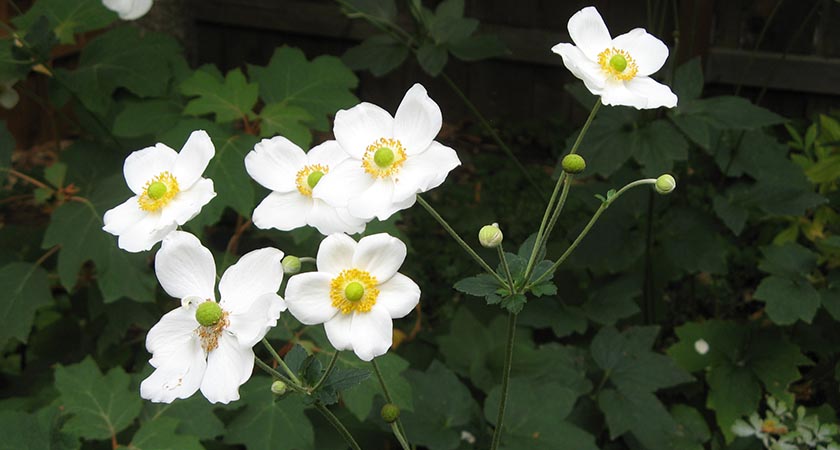Osmanthus
Evergreen plants come into their own at this time of the year and they will continue to take pride of place until early spring.
For this reason, pay particular attention to any shrubs or trees which take your fancy and jot down the names of those with especially attractive berries or leaf colour.
As regards attractive foliage, can I suggest a relatively cheap introduction from the family Osmanthus, one which will surely liven up a dark corner of your garden for the next few months?
Osmanthus heterophyllus ‘Aureus’ is low-growing, short jointed, and densely evergreen whilst boasting attractive yellow foliage (which looks like holly) and magnificent pyramid shape.
Its better-known cousin Osmanthus heterophyllus ‘tricolour’ is another worth sourcing for as its name suggests its foliage boasts three and more colours during all seasons.
Anemones
Japanese anemones are set to begin their stunning autumnal performance in semi-shade as well as open, sunny positions.
The trio at centre stage will always be the pure white ‘Honorine Jobert’, deep pink, semi-double ‘Prinz Henrick’ and pale pink ‘September Charm’.
“Invasive” I can hear you say? A little, perhaps, but easily kept in check.
Should you garden without them? Probably not.
However, keep new plantings of these under control by setting the anemones in buckets or large pots which have had their bottoms removed.
Then, their roots will not be able to travel and to become thuggish.
Hardy cyclamen
A diminutive but determined little flower is the hardy Cyclamen hederifolium.
First blooms of autumn are now showing in gardens countrywide.
Tubers can be bought now and if planted without delay will settle without setback.
Some of mine have grown large as dinner plates and have accompanied me for half a lifetime, flowering unfailingly every autumn and scattering the largess of their seeds freely.
These thrive in shade and uncongenial soil and you can even find them growing along hedge bottoms in older properties.
Even when planted in the arid ground at the foot of conifers they respond by flowering through this royal season then following on with magnificent ground cover foliage for the remainder of winter.


